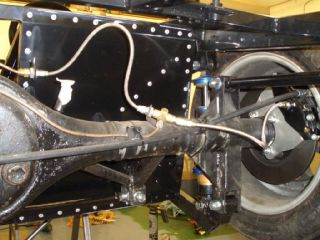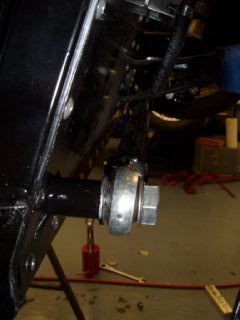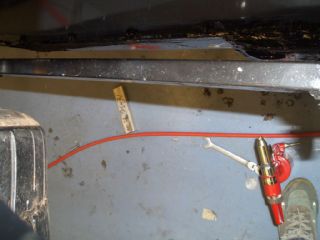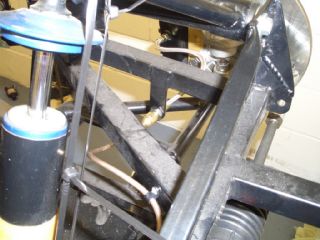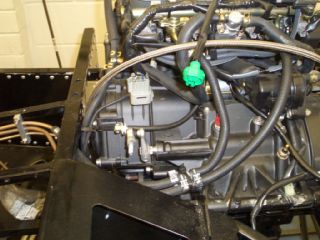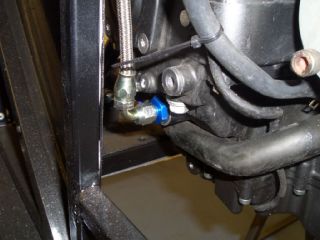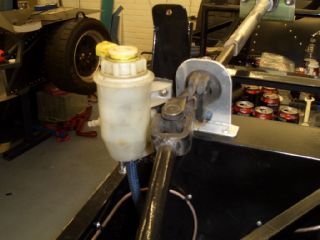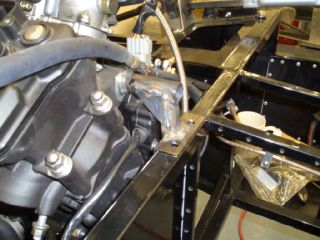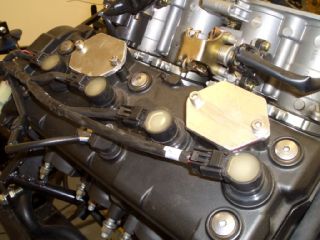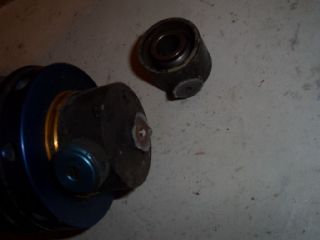The box of random assorted pedal box components that Martin Bell sent
me sadly, while it had a surfeit of brake pedals, lacked a throttle pedal. Upon mature reflection, I decided that
having two brake pedals wasn't likely to help my lap times, so I had to make a throttle pedal. A short bit of 10mm
steel tube, with a bend in it, some 2mm plate curved into a gentle curve (hit with hammer, lots), some holes for
added lightness, and the customary coating of POR15, and it's all in place.
It's held in place with the standard M6 bolt fitting that Furies have as standard, although because M6 bolts running
through a hole in some thin-wall steel tubing aren't the best bearings around, there's a fair bit of movement side
to side. The Furybird suffered from the same thing, and I can't say I ever noticed it when driving. It's still
tempting to do it properly and have the throttle pedal on proper bearings, but then it's also tempting to do it
really properly and make a lightweight throttle pedal from billet ali... |
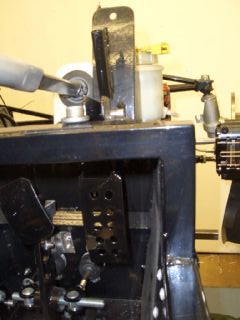 |
